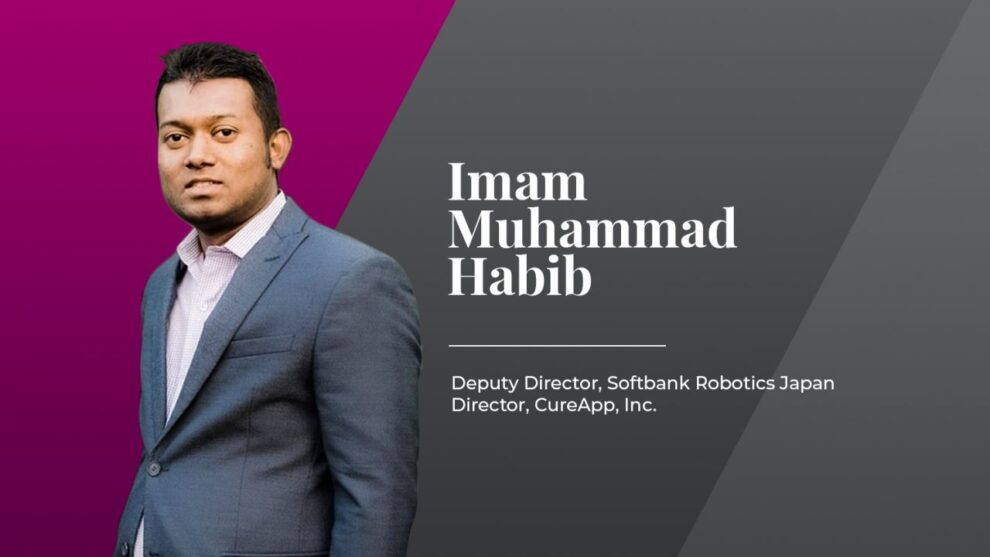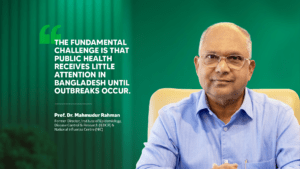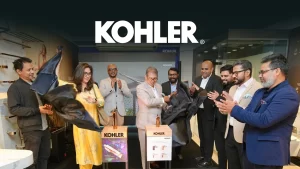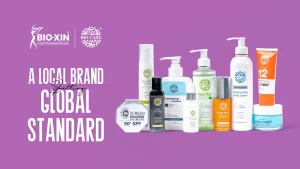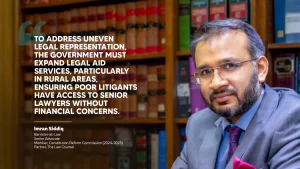I grew up in Azimpur Government Colony. My school was Rifles Public School, and I had very traditional parents who were always telling me to study hard. I was very studious and always used to be in the top 3 of the class. I even got a government scholarship in class 5 and 8. Even I got a private scholarship until class 5. However, but I wasn’t that good at drawing, haha.
During middle-high school I started to do debate. But as you can see, I still speak very fast, I couldn’t win much event in those intra-school debate tournaments. Not succeeding much in debate, I started doing quiz, and I won for the first time one quiz when I was in class 10 during an intra-school tournament. That was a miracle to me, to be honest, because I debated for a long time but didn’t win even once and then a sudden win in quiz. This is how I got interested in quizzes. Along with quiz, I was also involved in organizing many of the intra-school events.
Now when it comes to hobbies, I used to do a lot of things, one of them was reading books. I even eagerly read the small paper bags with some writings on it that used to come as a shopping bag. My parents were very traditional, and I have grown up in an environment where we used to think the more we read, the better grades we will get, the better job we will get, and we will eventually improve our lives. As my parents had limited income, my childhood was not luxurious. I used to save my pocket money to buy books and also, I used to borrow books from friends and cousins.
Let’s move to me. Now let’s talk about Notre Dame College. At that time, having a cgpa of 4.88 was a big deal. But on that time govt imposed against college entrance exam and Notre Dame college authority start the legal battle against govt so that the whole admission process got delayed. I was admitted into Dhaka college and I clearly remember that I had already declined Dhaka College to give the interview at Notre Dame. I had no backup option if Notre Dame rejected me, but I took the risk, and thankfully I got in.
And two things happened for me in Notre Dame, one was that I gained extensive leadership capability, but at the same time, I lost my academic capacity. It happened because everyone in Notre Dame had a cgpa of 5 and was under constant academic pressure. I did get placed in the top 300 out of the 1200 students in the first year but then I started focusing on the Science Club of Notre Dame. I gave too much time and effort to that club, which hampered my studies. But at the same time, I started getting into quiz competitions more seriously and found lifelong friends, close junior
There was this thing in Notre Dame, where they had two teams Notre Dame Blue and Notre Dame Gold. They let 600-700 people sit for an exam, from which they select 3-4 people based on interviews. And I was 1st in both of them. And after the exam, we got heavy training for becoming a professional level quizzer.
That time we were winning a lot, and when the success comes, it comes all together. We went to Holy Cross for a competition, and we won that as well, and then we won 12 Inter-college competitions. I participated in world quiz competition and became runner up and The famous QUIZ QUIZ hosted by Ferdous Bappy and their runner up too.
I had never planned on going to Japan as I was struggling with money, but then Mizan bhai from Omega (No 1 coaching center back in the 2000s) came and told me that I should be the head of their DU prep unit. So, I started Vision around that time, and that’s when I also started to become financially stable. It was around 2005 that I earned 86,000 tk. However, this took my attention away from my studies in Dhaka University econ as I didn’t go to class as much.
I was trying to look into universities abroad. I used to look at newspapers with odd advertisements that were offering full scholarships to many universities, and there wasn’t a single place that I didn’t apply to. I used all the money I earned to pay for the applications and courier fees. Eventually, a friend of mine came to me with the name of a university in Japan, which was offering 100% scholarships. And so, I got into this university named Ritsumeikan Asia Pacific University with a full scholarship.
After coming to japan I did so bad in my first semester, and to get jobs in Japan, you have to know Japanese, even though my university was entirely in English. I did retake the course and passed later on. I
I thought I was very smart to put oil in my hair, and tuck in my shirt and everything. But then I slowly began to realize that it wasn’t that “cool”, hahahahaha.
I was surprised to find out that there was some kind of informal ragging. But I got through it and eventually started my own club in the university called Fellow of Advisors or FLAG.

Going to university in a new place or a new country is a mix of excitement and anticipation that can make new students feel a bit nervous. No one understands those feelings more than other students who have gone on the same journey.
FLAG (Fellow Advisory Group) was established to welcome new students to the APU community. As a peer support group made up of APU students, FLAG helps those adjusting to life on campus and in Beppu ( university located).
FLAG members support new students with orientation events, giving guidance about student life and APU’s academic system. FLAG members introduce the world of APU, making everything easy to understand. FLAG will also host welcome events for new students, as well as provide information about student life on campus and in Beppu City.
This club had 50 volunteers and we organized meetings for 400 freshmen, and it was a big hit. Fortunately, the club is still going strong.
2. How did your professional journey begin? How and why did you start working in Japan?
I was really poor and, if I had to go back to Bangladesh, I wouldn’t have gotten a job because I didn’t have a North- American degree. So, one good thing about Japan is that the career opportunities are unified. When you are in your senior year, most of the university arranged on-campus recruiting process. and this is a long process and so it’s best to start it early and talk to companies that come to the campus. I had prepared my CV by hand – sort of like calligraphy , all japanese resumes in fresh grad recruitment process are hand written resumes And to be very frank, I was interested in the automobile industry from a very young age. But car companies usually didn’t come to our university. I used to get on a bus to go to the neighboring city, Fukuoka and attend the seminars of the car companies there. I just went there to show my face and meet people. I did this so that they take me seriously and pass me through the next round of the interviews. And, after all of that, I ended up getting 7 job offers, from the likes of Toyota, NSE, Tokyo Electronics, Daikin, etc. and at the end I chose Toyota.
3. Why did you leave Toyota to start consulting?
Toyota was a huge company but If you are a fresh grad, you don’t have that much room to contribute. in Japan, if you are not in a company for 10 years you won’t be learning much, as the learning curve is very slow. For example, if you give a proposal, the board of directors will keep it aside and get back to you after a very long time. It doesn’t matter how much market research you have done; if the CEO decides something it will happen that way. So, I kept asking myself what I was doing there. Yes, I was earning a decent amount, but I was not learning anything, everything I submitted to my manager or board of directors kept getting rejected. But one achievement I can talk about is the business trip to Indonesia.
It was during my second year at Toyota and we were doing research on the next generation car which will be 4 seater for DINKS and at the same time allocate enough space like AVANZA. We found out that people in Indonesia needed some kind of luggage storage to store water bottles because the tap water in Indonesia was as bad as the tap water of Bangladesh, if not worse. But this meant that the leg space of the car would have to be decreased. Also, Indonesia is a Muslim country, sometimes offering their prayers inside the car for whatever reason may it be. So, I proposed an idea to have an Azaan Alarm built in the car, which would automatically announce the Azaan from a tiny speaker next to the AC. That had a very positive feedback and after launching of AYLA -AGYA ( name of the car) we did early research the feedback of prayer alarm was big hit and it sold around 10000 unit /month and it was one of the achievements from my time in Toyota, after working there for 3 years. But it didn’t make me very happy.
I was always hungry for success, and I wanted to figure things out such as how management level make decisions.

4. What is the reason behind getting into Healthcare business? And how did you start your startup, CureApp?
I thought Japan was amazing but working for Toyota changed my mind. Deloitte on the other hand had people that were smart and hungry for success like me. When I went to an MBA fair, I met the founder of Cureapp, Kohta Satake.
And I remember that I had an appendix removal operation in Dhaka Medical, which was so unhygienic that I was determined to do something about it one day. And I also remember that there was so much traffic in Dhaka that you would miss doctor’s appointments even if you left the house with 2 hours to go. So, after talking to Kohta Satake about his long-term plans for mobile health, and as Bangladesh was adopting mobile phones during that time, my idea was to have patients sitting at home to be able to call the doctors through their phones. I liked Satake’s vision, and I also realized that in developing countries, the people on the outskirts are increasingly using mobile phones with internet access, but still lack access to proper healthcare. So, that’s why I got into mobile healthcare.
So, talking about Mr. Satake, I met him at the fair and we both liked each other’s ideas. He just completed his MBA and I think his roommate was a Bangladeshi as well. So, I started to help him with some stuff, such as preparing the pitch for potential investors at startup events. And this is how I got into this, as a volunteer just trying to help out a friend. And then we started the startup and I got some equity in the company. And during this time, Satake brought his friend named Shin Suzuki to do most of the programming and coding.
Our first product wasn’t very good, but by 2016, we improved and got some traction. Our product got featured in a paper from John Hopkins, and then several behavioral health apps started to surface in the Japanese market. We got around 300k of seed money and this is how we started Cureapp and started to hire engineers and other function.
So, let me tell you what Cureapp actually does; Imagine that you have a headache and there’s a medicine for it, but it’s not personalized to your specific dosage or needs. So, this health app will analyze your behavior and will prescribe your own customized medicine. This is the main idea behind a behavioral app. And we looked at the research and found out that Japan has a high rate of tobacco-related lung cancer. So Mr. Satake’s, he is a lung specialist doctor’s, plan was to reduce the use of tobacco to reduce the number of patients with lung cancer. And if this worked, we could move on to other products. Hence, our first initiative was to tackle tobacco dependency.
5. What are the success stories of Cureapp and some of its most significant strategies?
CureApp Smoking Cessation helps to quit smoking through smartphone Apps and portable CO inspectors by providing daily support to patients
We received regulatory authorization for the manufacturing and sale of Asia’s first therapeutics app, the “CureApp SC Nicotine Addiction Treatment App and CO Checker” (hereafter, CureApp SC), from the Ministry of Health, Labour and Welfare (MHLW) on August 21st, 2020. The Company is currently proceeding with plans to receive insurance reimbursement and release CureApp SC in FY2020..
CureApp SC is a prescription medical device designed to aid patients who are receiving outpatient smoking cessation treatment. The device supports patients in their attempt to quit smoking in a home setting. The product consists of three components – a patient app, a doctor app, and a portable CO Checker. The patient app leverages the fact that a smartphone is always by the patient’s side, enabling personalized guidance based on a patient’s therapy status and condition. The patient app is used in tandem with the portable CO Checker, allowing patients to accurately measure the concentration of carbon monoxide in their breath at home. Before the app, the home and work settings were seen as “blank” periods in a treatment program, where a medical professional could not provide an intervention. Assisting patients in such settings improves the success rate of smoking cessation. Details on the patient’s condition obtained from the patient app and the CO Checker will be shared with doctors via the doctor app. The doctor app provides doctors with greater insight into the patient’s response to treatments between checkups, allowing them to provide higher quality smoking cessation treatments and achieve greater efficiency.
This is huge because our product costs $400 monthly, but now with the insurance paying for most of it, the patients will be more interested in our app.
The safety and efficacy of CureApp SC has been demonstrated through clinical trials and, following preliminary approval from the Medical Devices and In-Vitro Diagnostics Working Group, Pharmaceutical Affairs and Food Sanitation Council of MHLW on June 19, CureApp SC received official regulatory approval by MHLW on August 21st. This is the world’s first therapeutics app to receive national regulatory approval for effectively treating nicotine addiction.
And talking about significant strategies, one of them is to have traction and another one is to enter the market before anyone else does. And even though this started before us in America, we were the first in Japan. Another significant strategy is to we have medical efficacy. And we planned to expand to the USA as well. We even had an office setup and I was supposed to be the CEO of the US branch, but my visa got rejected and due to immense pressure from the investors, I had to step down. I am still involved as a Board member.
Therapeutic apps currently in research and development include a nicotine addiction treatment app jointly developed with the Division of Pulmonary Medicine, Department of Medicine, Keio University, School of Medicine; a nonalcoholic steato-hepatitis (NASH) treatment app jointly developed and currently undergoing clinical trials with the University of Tokyo Hospital; and a hypertension treatment app jointly developed and undergoing clinical trials with the Department of Cardiovascular Medicine, Jichi Medical University.
In addition to designing apps for medical institutions, CureApp draws upon the knowledge accumulated over the course of development to provide lifestyle improvement apps to corporations. This mobile health program, the “ascure Smoking Cessation Program,” has been introduced to over 180 corporations, health insurance associations, and local municipalities.
CureApp plans to sequentially roll out this “digital health solution from Japan” worldwide, based on the model established in Japan.

6. What do you think is most important to become an entrepreneur?
In japanese, a word ‘Yaruki’. It means to start something. The most important thing is starting the startup. And the second thing would be the dedication and focus. And in Japan if your startup doesn’t have a big evaluation or an IPO, there won’t be much profit for you and investors won’t want to exit with your share before IPO or M&A..
7. What’s the overall scenario of startups in Japan? Any advice for an outsider?
Japan’s boom in startup started in 2014. But it already got disrupted in this pandemic. And to be honest, Japan isn’t very innovative, if some startups got success in USA, japanese starups copied their business model.
For example, Japan’s startup ‘Mercury’ is a copy from US giant ‘E-bay’. Mercury got a huge market share and they got an evaluation of $1.2 billion in the last 3 years, which is a first for any startup in Japan.
It is really easy to get funded if you have a good idea. Fukuoka is a city in Japan which is a hotspot for investors right now, and it is offering companies free offices and more incentives for investment – you only have to pay for hiring. You would also get a visa for 1 year. So, if you think you have a really good idea, great execution it may be perfect for you to come to Japan and start your startup.
8. We know that you are also working in Softbank Robotics. Give us an idea about the Softbank Robotics and how it works.
So, I was exploring a lot of industries and found this company that was looking for global expansion. Also, an HR guy from BizReach (japanese version of Linkedin) reached out to me about a position in Softbank Robotics and I said I was interested. The company was expanding to 4 new branches in APAC ,US, EMEA and JAPAN, and they offered me a position in EMEA (Europe and Middle Eastern).
I had to stay in London for some time as well. And what Softbank Robotics does is they only invest in robotics companies that make robots, and they bring the product to other countries to grow. So, the main guy behind the company, Masayoshi Son is a great visionary. He expects that by 2050, robots will be used everywhere.
Softbank Robotics’ first robot was Pepper, the humanoid robot, but it wasn’t much of a success. The next project Softbank Robotics invested was in Boston Dynamics. And Boston Dynamics made some really good robots. Their robot named SPOT can be used properly in the construction industry as well. But the problem is that Boston Dynamics is under DARPA agreement, which prohibits Boston Dynamics’ worldwide use as it terroists can use it in bad way.
If you look at our Whiz cleaning robot, which is a huge success, it was designed by softbank robotics , OS came from BrainOS which is founded by some brilliant scientists from Stanford, production by Foxconn, Taiwan. The combination and culmination of these three companies is what Softbank Robotics is about. Now Softbank Robotics is distributing Whiz to the entire world. So, you can say that Softbank Robotics is an “accelerator” from an investment standpoint.
9. Since when did your interest in robots start to grow? And what future prospects do you see in the robotics industry?
I believe that more or less every one of us is fascinated by technology to some extent, be it robots, AI, blockchain etc. And from a young age, I was just interested in all types of industries, and robotics was definitely one of them. And frankly speaking, there’s too much expectation from robots nowadays, imagining them to be some sort of Robocop!
Close your eyes and think “robot.” What picture leaps to mind? Most likely a fictional creature like R2-D2 or C-3PO from Star Wars. Very likely a humanoid—a humanlike robot with arms, legs, and a head, probably painted metallic silver.
A robot is made up of the very same components of human being. A typical robot has a movable physical structure, a motor of some sort, a sensor system, a power supply and a computer “brain” that controls all of these elements. Essentially, robots are man-made versions of animal life — they are machines that replicate human and animal behavior.
The IBM Watson isn’t that powerful as well, it can’t do everything like we expect it to.
But coming to your question, there will be 135% growth in industrial robots, as they’d do very good at repetitive work. For example, if you teach a robot to mow your lawn, they can do it very well. Another thing could be from going from point A to point B, like transportation robots or it could be as simple as a robot waiter. But it’s not going to be what people expect it to be like in the movies.

10. What kind of opportunities do you see for Bangladeshi students to join an industry like Softbank Robotics or Toyota Deloitte? How can they get themselves prepared for it?
First, get into tech and learn Japanese if you want to work in Japan. Because there’s a lot of competition nowadays. And you will see that people from India and Indonesia already have job experience before coming to Japan. Also, companies need computer engineers a lot now.
Another thing I would say is to stop majoring in BBA at least in Bangladesh , and even if you do, learn the technical sides of it too where they teach you python or simple coding/programming. Because you may not be in sales in Japan without knowing Japanese, but if you know programming that’s a universal skill. You can just learn only one programming language and that’d be enough.
In the automotive industry, the value of cars is changing significantly, due to diversification of market needs, the development of new areas such as MaaS (mobillity as a service) and CASE (Connected Autonomous/Automated Shared Electric) the entry of new industries utilizing IoT technology, and the emergence of new services such as ride sharing and car sharing. In ICT industry on the other hand, with the rapid progress of cloud services, big data, AI, and other cutting edge technologies, completely new digital services are emerging at an amazing speed, leading to the emergence of an era of direct impact, in which businesses depend on them to expand.
so they need more computer enginners or entry level coder. So, I would say, study CS or learn programming and try to learn a second language like Chinese or Japanese. And keep studying and avoid procrastinating.
11. What was the influence or inspiration that shaped you and contributed to becoming the person you are today?
The words “hungry for success” is what pushes me further every day. Hunger eliminates failure as an option . Another thing is the ability to observe what is going on around me. I used to observe what was going on in the house and outside while sitting in my verandah. These two things shaped me to become who I am today.
In terms of people that influenced me, there were different ones during different stages of my life. For example, my childhood friend, Sajid’s dad was very charismatic and I looked up to him. He was the one of the first ad maker of bangladesh and was the director of Japan-Bangladesh friendship hospital. I wanted to be like him who is friendly, charismatic and someone whom other people liked as well. Unfortunately, he passed away before I could ever talk to him about anything important even though I always really wanted to.
Another person that I want to mention is Anis uz zaman, he founded 1.4B venture capital fund in Silicon valley. But unlike me, he went to the USA right after completing his undergrad in Japan, Then he worked in IBM for long 10 years and started his own fund, Pegasus Tech ventures. And this guy who is the first generation to come to the USA at the age of 30+ now he is so successful ,With 60+ team members across 8 countries, and several funds under management.
Whenever I talked with him, I came back with 1000 volts of energy and I have never met any prudent person like me.
12. What are some of the other projects you are working on right now and what is your ultimate plan?
I am a small angel investor, I am helping some small startups in their early stages, but I can’t tell you their names. I am also the advisor of 6 startups in Japan, and I help them with their pitch stratgey, hiring, sales strategy, and everything else.
But to be honest, a lot of my dreams were always on hold because of money.
When I came to Japan, my parents had to borrow money from people, which I eventually paid back. And I think money is always a handicap for innovation in Bangladesh, even if things are probably better nowadays. So, my ultimate plan is to open a company that employs 10,000-20,000 people. I don’t know when or what the company will be about, but I like the fact that my employees’ families would have a better life and hopefully change other people’s lives as well. Hopefully by the time I am 40 I will start this venture.

15. What books are you reading lately today? And are you watching any TV shows?
Swipe to Unlock. It’s about 3 Indians who graduated in 2016 and are product managers of Google, Facebook, or Amazon. This book gives a very good insight and overview of the current tech world. So, if someone wants to be a future product manager or wants to go into tech, then they should definitely read this.
Now coming to TV shows, I have been watching Netflix sometime. I am a great fan of The Big Bang Theory and recently, I watched the documentary of Bill Gates, Money Heist, Extraction etc.
16. Do you have any plans on coming back to Bangladesh and establish any business here?
Yes, like I said, I do want to open up a company here. But I also want to grow the healthcare industry in Bangladesh. The CAGR is 12% at the same time OPPP ( households’ Out-of-Pocket-Payments) is around 66% , so I want to close this gap by creating a One-stop and Whole-process O2O Service Platform and it will provide a full-service ecosystem that cooperates with pharmacies throughout large cities up and down the country, the platform combines different platform types such as fintech services for insurance, a healthcare marketplace, telemedicine, and more.
